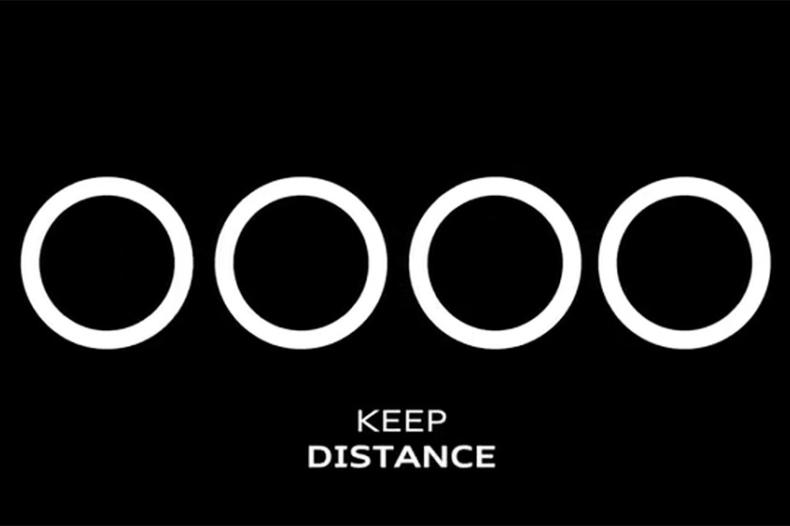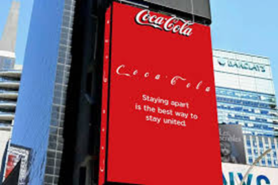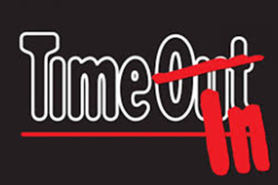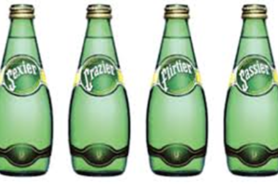Logos and social distancing
How are brands like Coca-Cola using 'fluid' trade marks to promote social distancing?

Only five months ago, few of us had heard of the term ‘social distancing’.
And now, in a relatively short period of time, social distancing has become customary for a majority of the world’s population and is likely to be a part of life for the foreseeable future.
Advocates of social distancing?
Initially, the very concept of social distancing seemed difficult to grasp, but as is often the case, visual representations and animations helped to convey the message.
A film featuring mousetraps and ping pong balls released by the Ohio Department of Health, or the ‘domino effect’ film released by the Associated Press, were perfect demonstrations of how social distancing works.
And the message has been reinforced by well-known brands which have created social distancing versions of their logos:
- Audi has separated its ‘rings and replaced ‘stay together’ with ‘keep distance’
- Volkswagen (VW) has separated its letters and added ‘Thanks for keeping your social distance’
- Coca-Cola has separated its letters and its message is ‘Staying apart is the best way of staying united’
- Miss Chiquita is missing from the Chiquita logo with an explanation that ‘I am already home’
- The Kappa couple are no longer back-to-back
- Time Out is currently Time In.

Consumers often have an emotional relationship to the brands that they trust and with which they identify and there is no doubt that brands adopting and reflecting the social distancing message is a powerful way to reinforce government advice.
In altering and using their logos in this manner, the message conveyed to the consumer is that ‘this is important, this is what we have to do and we are doing it together’.
Therefore there is no doubt that the use of ‘social distancing’ logos from a diverse range of businesses has acted as persuasive advocates for the social distancing message and that they have played an important part in encouraging social behaviours that have helped to protect our communities.
Present for consumers
Undoubtedly, the use of ‘social distancing’ logos goes beyond that of the role of ‘advocate’.
Maintaining visibility in a market that has rapidly changed to the point of being unrecognisable is a huge challenge - particularly when you cannot sell your product to consumers – and in these circumstances, brand owners need to work hard to remain ‘present’, with a view to consumers returning to the marketplace.
Will Gleason, editor of the temporarily titled Time In has explained:

“We’ve changed our logo temporarily to acknowledge the new reality, but rest assured: Time Out New York will continue to help you discover the best of the city, whether it’s Time Out or Time In.”
Fluid trade marks
The use of a logo amended to represent social distancing relies upon the same principles like the use of ‘fluid’ trade marks.
Trade marks that change over time in a manner that maintains both the brand’s ‘essence’ and the consumer’s interest and enables the brand owner to take advantage of new marketing opportunities and to adapt to new market conditions.
The most famous example of a fluid trade mark is the GOOGLE logo, which is frequently adapted to reflect a myriad of celebrations including national holidays, anniversaries, sports fixtures and inventions.

There are other notable examples of fluid trade marks, such as the 2006 Perrier campaign which replaced the stylised ‘Perrier’ from the neck of each bottle with another word of a similar length including; ‘Sexier’, ‘Crazier’, ‘Flirtier’ and ‘Sassier’ all represented in the famous Perrier stylisation.
The key to the success of fluid trade marks is that the consumer must always and immediately recognise the brand, the origin of the goods/services, even if the dominant element of the trade mark is omitted or represented in a different manner.
Similar to the Google doodles, the newly adapted logos have been created, not to celebrate a particular event, but to draw attention to the importance of social distancing. However, the brands concerned all still obey the rule of being instantly recognisable as Audi, VW, Coca-Cola etc.
Not all trade marks are equal

The number of businesses that can successfully make use of fluid trade marks is limited at any given time because in order to generate the freedom to be able to adapt your trade mark, you must first generate considerable goodwill in the original version.
To do that the consumer must be conditioned to recognise and engage with the trade mark and therefore, initially, consistency and repetition are required; any attempt to divert from that is likely to weaken the goodwill vested in the trade mark.
It follows that some trade marks should never be adapted simply because they are inherently weak. It is difficult to generate goodwill for an inherently weak trade mark and almost impossible to generate the level of goodwill that would be required in order to ensure that use of the adapted versions would not undermine the function of the trade mark.
It is no coincidence that the brands that have been adapted to reflect social distancing are some of the most ‘confident’, valuable and recognisable in the marketplace, each with enviable levels of goodwill.
Can logos generate goodwill?

If a brand can be adapted but still clearly indicate origin, arguably the use of that adapted version is capable of generating goodwill for the business as a whole. In fact, the use of fluid trade marks arguably increases the goodwill vested in the original trade mark, because it can create a broader commercial footprint; but any claims to the generation of goodwill must be supported by evidence.
The nature and purpose of social distancing logo’s mean that they are unlikely to be used across multi-media campaigns, but will feature almost exclusively across social media platforms and in many respects this can make the capture of evidence of use easier and more meaningful for brand owners because the available data reflects the brand’s interaction with consumers.
Should social distancing logos be registered?
Generally, fluid trade marks have a short lifespan, generated for particular campaigns or events and are rarely registered.
Arguably social distancing logos fall into that category or least they were intended to.
If social distancing is likely to be a part of life for the foreseeable future, the lifespan of these adapted logos will be similarly extended and consumers may expect to see social distancing logos being used alongside the original version to create a harmonised message.
If that is the case, there would be value in registering social distancing logos.
Read more food and drink insight

